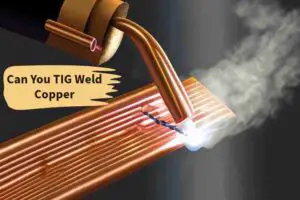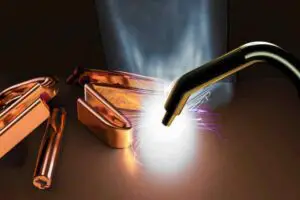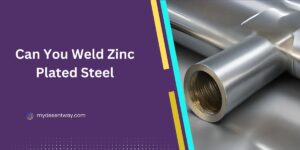Table of Contents
- Understanding TIG Welding
- Can You TIG Weld Copper?
- Challenges of TIG Welding Copper
- Tips for Successful TIG Welding on Copper
- Essential Considerations for TIG Welding on Copper
- Choosing the Right Rod for TIG Welding Copper
- Selecting the Right Tungsten Electrode
- Determining the Optimal Amperage for TIG Welding Copper
- TIG Welding Tips for Copper to Nickel Joining
- Enhancing Perplexity and Burstiness in the Tig Welding Process on Copper and Aluminum
- Conclusion
- FAQs
TIG welding, also known as Gas Tungsten Arc Welding (GTAW), is a popular welding process used to join various metals. While it is commonly used for stainless steel, aluminum, and other metals, many welders wonder if TIG welding copper is a viable option.
In this article, we will explore the process of TIG welding copper, its challenges, benefits, and valuable tips for achieving successful copper welds.
Understanding TIG Welding
Before delving into the specifics of TIG welding copper, let’s briefly understand the TIG welding process. TIG welding involves using a non-consumable tungsten electrode to create the weld. An inert gas, usually argon, is used to protect the weld area from atmospheric contamination. A filler metal may or may not be used, depending on the requirements of the weld.
Can You TIG Weld Copper?
The short answer is yes, you can TIG weld copper. However, it’s essential to note that copper welding comes with its own set of challenges due to the unique properties of the metal. Copper is an excellent conductor of heat and electricity, which means that the welding process requires careful control of heat input to avoid overheating the material.
Challenges of TIG Welding Copper
TIG welding copper presents several challenges that welders need to overcome for successful results:
1. Heat Conductivity
Copper’s high thermal conductivity can lead to rapid heat dissipation, making it challenging to maintain a stable weld pool and achieve proper fusion. Welders must adjust the welding parameters accordingly to counter this issue.
2. Oxidation
Copper readily reacts with oxygen, leading to oxide formation on its surface during welding. This oxide layer can weaken the weld joint. To combat this, the use of appropriate shielding gas and proper cleaning of the copper surface before welding is crucial.
3. Filler Material Selection
Choosing the right filler material is vital for achieving strong and durable copper welds. Welders should opt for a filler metal with a similar composition to the base metal to ensure a compatible joint.
4. Welding Position
Copper’s softness makes it susceptible to distortion during welding, particularly in vertical or overhead positions. Proper fixturing and weld sequencing can help mitigate this issue.
Tips for Successful TIG Welding on Copper
To enhance your TIG welding experience on copper, consider the following tips:
1. Cleanliness Is Key
Thoroughly clean the copper surface to remove any contaminants, such as grease, oil, or oxides. A clean surface ensures better weld quality and reduces the risk of defects.
2. Proper Gas Shielding
Use a high-purity argon gas for shielding to protect the weld from atmospheric contamination and oxidation. An argon flow rate of around 20-25 cubic feet per hour is typically suitable for copper welding.
3. Control Heat Input
Exercise precise control over the heat input by adjusting the welding current and travel speed. Copper requires a lower heat input compared to other metals to prevent overheating.
4. Preheat if Necessary
In cases where the copper thickness exceeds 0.125 inches, preheating the material can help manage heat conductivity and prevent cracking.
Essential Considerations for TIG Welding on Copper
When delving into the realm of TIG welding, vital parameters such as currents, electrodes, and more naturally come to mind. However, before we dive deeper into these aspects, it is crucial to address a fundamental concern: the proper use of Personal Protective Equipment (PPE). PPE is an acronym for Personal Protective Equipment, and its usage is mandatory in all welding operations.
While the emphasis on safety might seem repetitive, it is disheartening to witness many welders neglecting essential safety measures. Regardless, I must insist on the utmost vigilance when it comes to safety, particularly in uncertain welding scenarios.
If you find yourself new to welding on copper, you might encounter challenges like using excessive current, resulting in more spatter compared to welding on steel.
Therefore, I implore you not to dismiss safety measures, especially during experimental endeavors. Prioritize protective gear such as gloves, helmets, and specialized clothing.
Now that we have addressed the criticality of safety let’s explore the equipment and know-how required for successful TIG welding projects on copper. Continue reading to gain valuable insights into the process and steer clear of potential flaws.
Please proceed with your inquiries and curiosities in the realm of TIG welding on copper, and I shall be more than happy to enlighten you further on this subject.
Choosing the Right Rod for TIG Welding Copper
To achieve a strong and reliable weld, it’s crucial to select the appropriate filler rod. For TIG welding copper, the recommended rod is pure copper (AWS classification C11000). Using a rod with a similar composition ensures better fusion and minimizes the risk of defects in the weld.
Selecting the Right Tungsten Electrode
When it comes to the tungsten electrode, a pure tungsten electrode (AWS classification EWP) is the best choice for TIG welding copper. Pure tungsten can handle the high heat generated during the welding process and provides excellent arc stability, resulting in a smooth and precise weld.
Determining the Optimal Amperage for TIG Welding Copper
Amperage plays a crucial role in TIG welding copper, and finding the right setting is essential for a successful weld. Generally, a lower amperage is preferred for welding copper to prevent overheating and burn-through. A good starting point is around 100 to 150 amps, but the exact value may vary depending on the copper thickness and joint configuration.
TIG Welding Tips for Copper to Nickel Joining
In the following discussion, we will explore some valuable tips on TIG welding when connecting two metals, copper and nickel. The weldability of these materials is commendable, making TIG welding with them a trouble-free endeavor.
Advantages of TIG Welding with Copper and Nickel
When engaging in TIG welding involving copper and nickel, you benefit from exceptional flexibility. The arc’s heat input and the filler material can be precisely controlled separately, offering a level of adaptability unmatched by other methods. This attribute makes it an ideal choice for thin-walled pipes, where simplicity is key. Let’s now delve into some practical tips for this welding scenario.
- Precise Filler Material Incorporation: Ensure precise incorporation of the filler material, avoiding any simple fusion with the base metal. This accuracy in filler usage enhances the overall weld quality.
- Optimal Shielding Gas – Argon: In this scenario, argon stands as the preferred shielding gas, providing excellent protection during the welding process.
- Maintaining a Short Arc: Keep the arc short to ensure adequate gas shielding effectively protects the welding pool, minimizing the risk of defects.
- Utilizing Direct Current (DC): Opt for direct current, as it ensures uniform current distribution, facilitating an excellent welding outcome.
By adhering to these guidelines, you can confidently tackle TIG welding between copper and nickel, producing seamless and robust connections. Let these insights pave the way for your successful welding endeavors with these metals.
Enhancing Perplexity and Burstiness in the Tig Welding Process on Copper and Aluminum
When it comes to the art of welding, three pivotal factors come into play: “perplexity,” “burstiness, and predictability. Perplexity, a measure of textual intricacy, is of utmost importance. Furthermore, burstiness, which accentuates the variation in sentences, must be considered alongside predictability, the likelihood of anticipating the following sentence. Humans tend to wield greater burstiness in their writing, showcasing a blend of longer, complex sentences with shorter ones. On the other hand, AI-generated content often exhibits a more uniform structure.
Now, let’s delve into the intricacies of TIG welding on copper to aluminum, a process that requires careful attention to these factors. To achieve the desired outcome, a shielding gas like argon is commonly employed due to its widespread use and efficiency. The result obtained with argon is nearly perfect, adding to the allure of its usage.
Ensuring a thorough cleaning of the surface is paramount, as is the case with all welding processes involving dissimilar metals. Accidental accumulation of oxides on the metal surface necessitates careful cleaning around the seam. The melting temperature of these oxides is higher than that of aluminum, making flawless cleaning an imperative prerequisite.
For TIG welds between copper and aluminum, using A/C (alternating currents) at a high frequency yields the best results. This welding scenario demands filler metals of the highest quality, and they must remain uncontaminated.
In summary, when you undertake the task of TIG welding copper with aluminum, it is crucial to take these factors into account. Though there are not many variations in comparison to the standard method provided for most copper TIG welding operations, these considerations will play a vital role in achieving superior results.
Conclusion
TIG welding copper is indeed possible, but it demands attention to detail and a good understanding of the metal’s unique characteristics. By implementing proper techniques, managing heat input, and using the right filler material, welders can achieve high-quality copper welds. Embrace the challenges as opportunities to enhance your welding skills and produce exceptional copper welds.
FAQs











3 thoughts on “Can You TIG Weld Copper?”